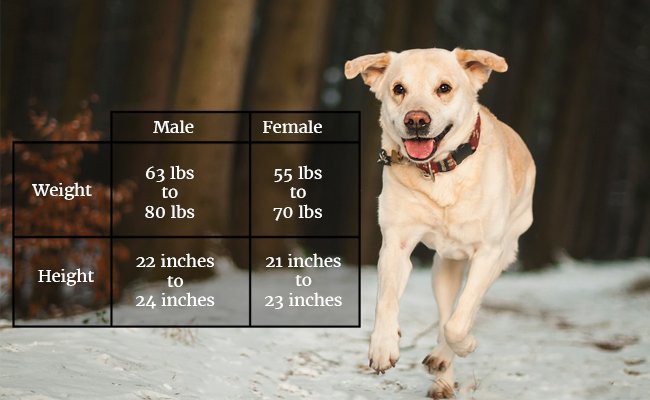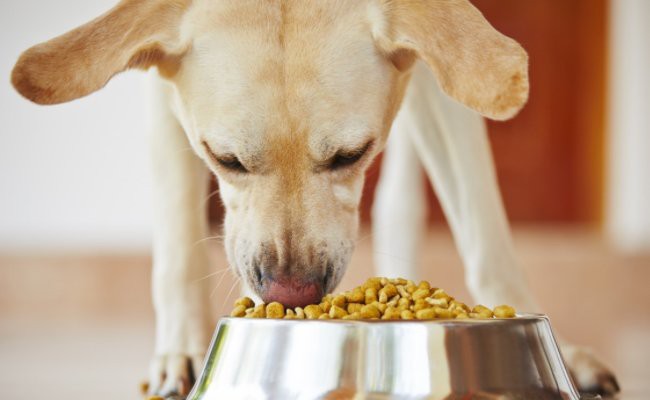Dog Pregnancy Calculator And Timeline
The family-friendly, smart, and gentle Labrador Retriever originally from Canada still holds the position of the utmost popular and famous dog breed in America. The Labrador Retriever appears in different colors as Chocolate Lab, Black Lab, and Yellow Lab.
Known for their affection towards their master, Labrador Retriever perform exceedingly well as guide or partner dogs for the visually challenged, in detecting and exposing narcotics with law department, and also serves as emergency rescue dogs.
People fondly call Labrador Retriever as “Lab” and this favorite breed is the only dog with maximum registrations all over the world.
Labrador Retriever Breed Characteristics Sheet
- Origin: Newfoundland, Canada
- Size: Large
- Dog Breed Group: Working / Herding /Family dog/ Guard/ Police dog/ Search and Rescue dog/ Service dog/ Guide dog
- Purebred: Yes
- Lifespan:10-12 years
- Height: 21.5-23.5 inches (female), 22.5-24.5 inches (male)
- Weight: 65-80 pounds (male) and 55-70 pounds (female)
- Coat Appearance: Double coat
- Coat Colors: Chocolate, yellow, black
- Temperament: Friendly, Alert, Energetic, Smart, Intelligent, Lively, Caring
- Good With Children: Yes
- Intelligence Level: High
- Good With Pets: Yes with supervision
- Hypoallergenic: No
- Grooming: Moderate (occasional)
- Shedding: High (seasonal)
- Suitable For Apartments: Low
- Need For Exercise: High
- Easy To Train: Yes
- Good For First Time Owners: Moderate
- Health Issues: Tick Bites, Hip Dysplasia, Elbow Dysplasia, (OCD) Osteochondrosis Dissecans, Cataracts, (PRA) Progressive Retinal Atrophy, Epilepsy, (TVD) Tricuspid Valve Dysplasia, Myopathy
- Litter Size: 6-8 puppies, average-3
- Average Price: $800 – $1200 USD (US), £650 – £850 (UK)
What Is Labrador Retriever?
America’s most favorite dog, the Labrador Retriever originated before AD 1800 in Canada around the southeast coast of Newfoundland. Experts claim they are bonded cousins of Newfoundland dogs.
They were called St.John’s water dogs as they were extremely strong swimmers.
Fishermen used these dogs to retrieve codfish that normally shake themselves off the hook when drawn to the surface. They even assisted the fishermen to pull the wet and heavy nets towards the shore.
Fishermen found the smooth, short, and water repellent coat of Labradors more affirmative than the shaggy coat of Newfies.
Where do labrador retrievers come from?
These St John’s dogs were imported to England and were called as Labrador Retrievers during the mid-1800s. The Kennel Club of England classified this dog as a separate breed in 1904.
Labradors rank top in the list of AKC recognized breeds for quite a long period of time. Popular with hunters, this breed is playful, protective and friendly which makes this breed hold the perennial popularity.
As with American Labs, they are a bit slim compared to their English counterparts. They excel well in hunting and fieldwork while bulky English Labs do well as show dogs.
Labrador Retriever Size
Labrador Retriever holds a variation of sizes and falls under the medium-sized dog category.
How big do Labradors grow?
The male dog weighs from 60 to 80 lbs and the female labs weigh between 55 to 70 lbs.
Males stand at 22.5 – 25 inches at the shoulder while females are in the vicinity of 21.5 to 24.5 inches.
When do labrador retrievers stop growing?
This breed normally matures at a very moderate level and it reaches the adult size only between 8 months to 2 years of age. Some labs grow till 8 years of age.
Labrador Retriever Lifespan
The Labrador Retriever generally lives up to 10 to 12 years. In certain cases, they can exceed the average life expectancy range due to numerous factors including genetic makeup, diet, and healthcare control, inherited diseases, etc. A study carried out in 2004 revealed 31% of Labradors die of cancer.
Yellow labs and Black Labs have an average lifespan of 12.1 years whereas Chocolate Labs have the shortest life expectancy of around 10 years.
Which is the oldest Labrador Retriever ever to live?
The oldest labrador was Adjudant from the United Kingdon that lived for 27 years and 3 months.
Labrador Retriever Temperament
The Labrador Retriever is known for its high energy level and they exhibit it without any fear.
They are extremely outgoing, protective, and friendly. Labs play really well with all the family members.
Are labrador retrievers good dogs?
With the sweet-natured and amiable characteristics, Labrador Retriever is a great family pet.
Labrador Retrievers are energetic, large dogs and like other dog breeds, they too need training and socialization lessons from the early months.
Apart from a splendid pleasing personality, the eagerness and intelligence of a Labrador Retriever make it easy to socialize and discipline.
The Labrador Retriever needs a lot of mental activities and physical exercises to burn off their energy and also to keep them sound and happy.
Are Labrador Retrievers Aggressive?
Normally they are well-behaved dogs, however, some can be boisterous or rowdy while others may appear to be laid back.
They must be given regular physical activities and mental teasers to vent out their energy. Else, they may show their venting out in many destructive ways and do a lot of barking and chewing.
Labrador Retriever Fun Facts
- Officially recognized in 1903 in the UK, the Labrador retriever garnered much appreciation during the Second World War in the United States.
- Nowadays, Police services use Labrador retriever for emergency rescue operations.
- No dog takes to water like a Labrador retriever does because their double fur coat protects them from harsh cold weather conditions.
- Silver-colored Labradors can also be found and the dilution gene in a chocolate Labrador causes them to appear in silver. These silvery grey-coated labs are not accepted under breed color recognition yet.
- According to breed standards, there is only one Labrador retriever breed whether it is English or American breed. The English Labradors and American Labradors are also called Show Labradors and Field Labradors respectively.
- Previously, people called Labrador Retriever as ‘St John’s dog’. Also, they were sporting dogs mainly used in Canada in the Newfoundland area.
- Endal, the most celebrated British Labrador has also received a lot of appreciation from its fans all over the world.
- Another Labrador retriever named “Blind of Arden” appeared on the Life magazine’s cover in the year 1938.
- The eyes of a chocolate-colored Lab can be brown or have a hazel shade with brown eye rims.
Labrador Retriever Names
| Male | Female |
|---|---|
| Bear | Molly |
| Jake | Daisy |
| Buddy | Lucy |
| Max | Bella |
| Duke | Bailey |
| Jack | Abby |
| Shadow | Lady |
| Charlie | Sadie |
| Rocky | Maggie |
| Sam | Pop |
Recommended Read: Majestic Names For Your Male Dogs, Cute Names For Female Dogs
Labrador Retriever Health Issues
Proving wrong to the perception that Labrador Retrievers can suffer from inherited diseases irrespective of the type of lab or coat color, the color dilution alopecia is prevalent mainly in silver labradors. Chocolate color labs may be more prone to skin and ear problems.
Labrador Retriever ear problems
Being a water dog, Labs are more prone to ear infections. Since they have dropping ears, it is important for a weekly ear checkup and cleaning to avoid the swelling of a dog’s earflap caused by chronic allergies.
Cold Tail or Limber Tail Syndrome in Dogs
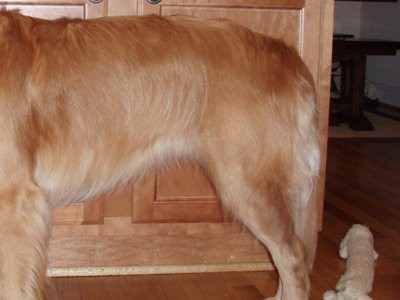
It is a painful condition where Labrador Retriever’s tail goes limp. Not an alarming condition, but still requires proper medical care and treatment.
Acute Moist Dermatitis In Dogs
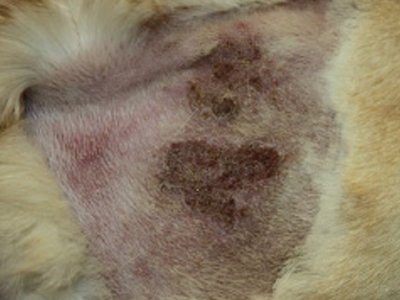
A condition where the skin appears inflamed and red in color. Caused by bacteria, it is commonly called hot spots. Treatment includes administering antibiotics, using a medicated shampoo, and clipping the hair.
(GDV) Gastric Dilatation Volvulus In Labs
- Mainly affects deep-chested breeds of dog, it is also known as “Bloat”. Likely causes can range from performing very rigorous exercise after eating, drinking large volumes of water without any purpose, and eating everything in a go, etc.
- The stomach is unusually filled with air or gas, and the dog will find it difficult to get rid of this excess gas.
- If left unnoticed the condition may worsen and can result in severe heart conditions.
- At times the dog might appear weak, lethargic, depressed, and restless. Take your dog to the nearest vet if you happen to notice any of these conditions or any other abnormality.
Myopathy in dogs
- This affects the nervous system and the muscles. The early symptoms are stiffness and tiredness, usually not found in healthy puppies.
- Hence, dogs with this disorder should not be bred at any cost.
(TVD) Tricuspid Valve Dysplasia
- A one of a kind congenital heart problem, the tricuspid valve located on the heart’s right side is affected. Depending on the case, it can be severe or mild.
- An ultrasound scan can reveal this defect is present.
Epilepsy In Dogs
The Labrador Retriever is prone to seizures and it can occur due to various factors such as severe injuries, exposure to harmful substances, infectious diseases, and other metabolic disorders.
Immediate medical treatment is the only way to address this problem.
Eye Problems In Labs
This breed like any other dog breed is susceptible to many genetic eye diseases that may end up in blindness. Immediately seek the guidance of Vets to save him from becoming totally blind.
(PRA) Progressive Retinal Atrophy In Dogs
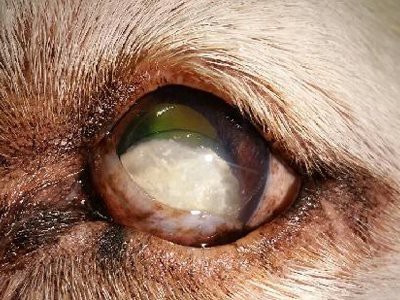
In this case, the retina tends to deteriorate and thereby causes blindness. It tends to adapt to this condition and can manage if the surroundings are not altered every now and then.
Cataracts in dogs
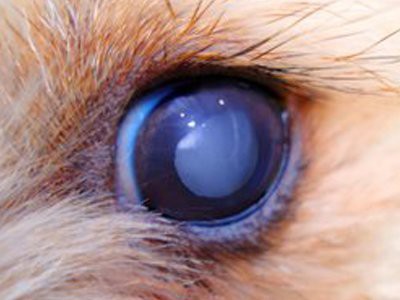
Dog’s eye lens gets cloudy blocking the vision, and as a result, the dog might lose its eyesight completely.
Hence, taking the dog to a registered ophthalmologist is the right approach to handle this problem.
Joint problems in Labradors
Joint problems are generally caused by progressive and degenerative reasons. Age problems may also cause bone and joint problems in dogs. The two main developmental issues include elbow and hip dysplasia.
(OCD) Osteochondrosis Dissecans
- The cartilage grows improperly affecting the joints, and in recent times the shoulders and the elbow are also getting affected.
- Your dog affected with this condition will also suffer from severe pain in the elbow.
- Proper medication in addition to a proper diet can reduce pain and suffering.
Elbow Dysplasia In Labradors
This disorder affects the bones related to the elbow causing bone joint laxity hence the result is painful lameness.
Hip Dysplasia in Labradors
For dogs suffering from hip dysplasia, the thighbone will not fit properly into the joint causing problem while walking. It is a hereditary problem.
Tick Problems In Labs
Tick prevention in this breed means removing a tick environment. Also, animals like rodents and deer can carry ticks. In Labrador Retrievers, the most common tick problem is tick bite fever by “Brown Dog Tick”. This tick can complete its full life cycle in a couple of months.
Try using Fipronil, Imidacloprid, and Pyrethrin medications but avoid Permethrin as it can affect cats too. Finally, use vaccines, tick collar, tick sprays, topical, etc. and safeguard your dog from ticks.
Are labrador retriever hypoallergenic dogs?
No, Labs are not hypoallergenic. They shed a lot during the shedding seasons. Actually no dog is hypoallergenic; even the word itself is hypothetical. If you are allergic to dog dander, then you can not even pet a dog and Labs are no exception. But compared to other canine breeds Labs have low allergen levels.
How To Train A Lab Puppy?
The ability of the Lab to learn commands is remarkable. While training your furry friend will exercise his body and mind through commands and decodes his energy into admirable and controllable behavior.
Early Labrador Training Techniques
- Start training when your dog is very young. The first month after the adoption is the vital bonding period and the best time to train him. Teach him the routines.
- Generally, the puppy’s attention span is short; so, keep the training session shorter.
- The first step is to go for obedience training which will control your dog’s rank impulse and to make him understand you and your family do rank above him.
- Elimination rules like elimination areas must be introduced as soon as he is home. Be attentive to his body language. Take him outside where he has to eliminate when he needs to urinate or defecate.
- Be gentle with him and give him his due respect.
How Much Exercise Does Labrador Need?
Labrador retrievers are intelligent and possess a high scale of energy. They are prepared to do all kinds of physically demanding jobs. They are aesthetic and succeed in many jobs.
Make sure your Lab gets at least 30 to 60 minutes of rigorous physical exercise regularly. Otherwise, your buddy will start doing unwanted and destructive jobs like barking, out-of-season hunting, fence fighting, and digging.
It’s better to give your furry friend some constructive activities to prevent this problem.
While exercising give your buddy a long leash. Rowdy adolescents and adult labs may require more persistence. But you can train them by rewards for their cooperation and correcting them using their own resistance.
Generally, exercise-induced collapse is common in Labradors. Make sure they do not exercise until they become weak and collapse.
Labrador Retriever Diet And Nutrition
Recommended servings include 2.5 – 3 bowls of good quality dry foods per day and served as two meals.
As they are prone to allergies, arthritis and weight issues, you should give your Labrador a proper diet. Also, you should be aware of the foods to be given and avoided.
Labrador Retriever Food Recommendations
The below-mentioned foods are rich in nutrients and they are healthy for Labrador Retrievers.
- Beef (You can feed your dog plain and lean beef without any seasonings)
- Oats
- Barley
- Rice (You can feed him bland rice mixed with yogurt or with steamed meat; very good for dogs with upset tummies)
- Oats
- Peas and beans
- Potatoes (Do not feed raw potatoes to your dog. You can give him cooked or boiled potatoes but in a small portion)
Foods having omega-3 and omega-6 fatty acids are much helpful for these dogs. Plain chicken without any seasonings and spices can be added to your dog’s regular food as chicken adds extra protein to your dog’s diet.
Beans are safe for dogs, however, there are certain beans like broad beans or fava beans that must be avoided. Do not feed canned beans or refried beans to your canine friends.
In addition, foods with DHA help for their vision and brain development. Moreover, you can feed foods rich in chondroitin sulfate and glucosamine, which will be helpful for their joints.
Foods Labrador Retriever Should Avoid
- Cheese
- Yogurt
- Chocolate
- Onions
- Garlic
- Nuts
- Raw eggs – lead to salmonella
- Cooked bones may cause damage to the dog’s teeth, gums, and throat
- Raw lamb, Raw pork – may contain diseases that are harmful to dogs.
It is important to avoid feeding dairy products such as cheese, yogurt, etc as they may cause diarrhea in lactose-intolerant dogs. Also, you should always avoid feeding garlic and onions as they may cause dehydration in dogs.
So, it’s necessary to feed the right food in the right amount to dogs.
Labrador Retriever Breeders And Adoption Centers
- AKC Operations
Address:
8051 Arco Corporate Drive, Suite 100
Raleigh, NC 27617-3390 - The Labrador Retriever Club, Inc.
Address:
New York - Ashland Labradors
Address:
Downtown Nashville (North), TN - Belquest Kennels
Address:
18745 Penn Shop Road
Mt. Airy, MD 21771-3933



